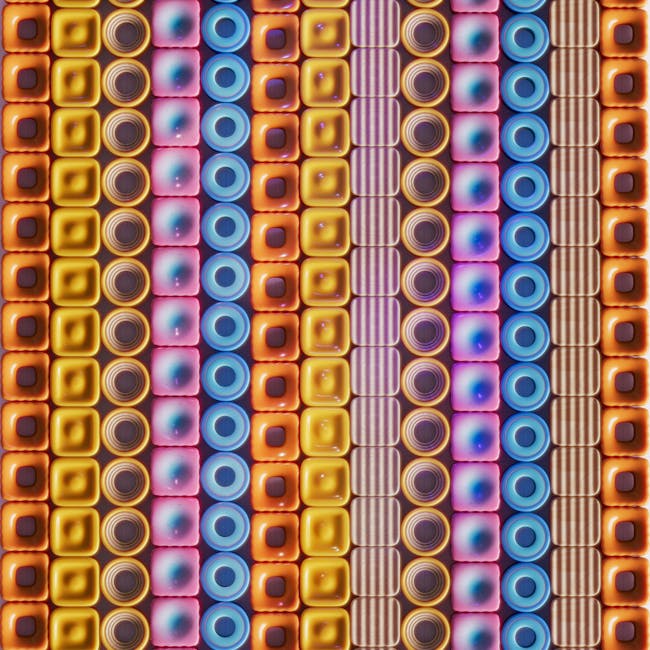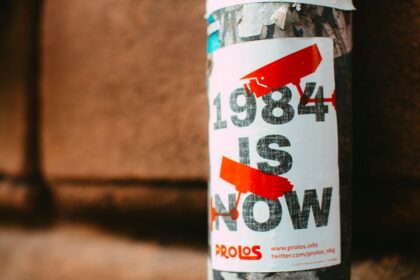Mastering the art of YouTube video ads that genuinely convert transcends mere visibility; it demands a sophisticated understanding of audience psychology, creative storytelling, and technical execution. The core challenge lies in captivating an audience in an inherently distracting environment, compelling them to take a specific action, whether it’s making a purchase, signing up for a newsletter, or downloading an app. This pursuit requires a deliberate strategy that integrates compelling narratives with data-driven optimization, ensuring every frame, every second, and every sound byte contributes directly to measurable business objectives. It’s not about creating ads that are simply seen, but ads that are felt, remembered, and acted upon.
The Foundational Principles of High-Converting YouTube Ad Creative
At the heart of any successful YouTube video ad campaign lies a deep understanding of fundamental creative principles that resonate with human behavior and drive desired actions. These principles are universal, yet their application within the dynamic landscape of YouTube requires specific tactical considerations.
1. The Imperative Hook: Capturing Attention in the First Five Seconds
YouTube’s skippable in-stream ad format grants viewers the power to skip an ad after just five seconds. This critical window dictates the absolute necessity of an immediate, compelling hook. The first five seconds are not merely an introduction; they are the entire audition for the viewer’s continued attention. Effective hooks disrupt the passive viewing experience, pique curiosity, or immediately present a value proposition.
- Intrigue and Curiosity: Pose a provocative question, present an unexpected visual, or hint at a significant revelation. For example, an ad for a project management tool might start with a frustrated sigh and a rapid montage of cluttered desktops, immediately relatable to the target audience.
- Problem Identification: Directly state a common pain point the target audience experiences. “Tired of endless spreadsheets?” or “Is your social media strategy falling flat?” immediately establishes relevance.
- Dramatic Visuals/Sound: A sudden, impactful visual, a surprising sound effect, or an emotionally charged scene can cut through the noise. This could be a before-and-after transformation, a shocking statistic presented visually, or a distinctive jingle.
- Direct Value Proposition: Immediately articulate the core benefit or solution your product offers. “Save 30% on your energy bill starting today!” or “Discover the secret to flawless skin in just one week.”
- Human Connection: Start with a close-up of a relatable face expressing an emotion, or a direct address to the viewer that feels personal. Authentic reactions or genuine testimonials can be powerful opening gambits.
The goal is to create an “open loop” in the viewer’s mind, a question or desire that can only be satisfied by continuing to watch. This initial engagement is the lynchpin for all subsequent persuasion.
2. Problem-Solution Framework: Resonating with Audience Needs
Once attention is captured, the ad must articulate its purpose with clarity and empathy. The classic problem-solution narrative structure is highly effective because it mirrors the natural human process of identifying a need and seeking a remedy.
- Empathize with the Problem: Don’t just state the problem; illustrate its impact. Show the frustration, the inefficiency, the missed opportunities, or the discomfort it causes. Visual storytelling is paramount here. A fitness ad might show someone struggling with a tedious workout, while a financial planning ad might show a person looking stressed at a pile of bills.
- Introduce the Solution: Present your product or service as the logical, effective answer to the identified problem. This transition should feel seamless and intuitive, positioning your offering not as an expense, but as an investment in a better outcome.
- Showcase the Transformation: Beyond just stating the solution, demonstrate the “after” state. How does life improve once the problem is resolved? This could be increased efficiency, greater comfort, improved health, or newfound joy. Visualizing the positive change creates aspiration and reinforces the value proposition. The key is to make the viewer envision themselves in that improved state.
3. Benefit-Driven Messaging: What’s In It For Them?
Advertisers often mistakenly focus on features rather than benefits. Features are what a product is or does; benefits are what a product does for the user. High-converting ads relentlessly emphasize benefits.
- Translate Features into User Value: If your software has “cloud integration” (feature), the benefit is “access your work from anywhere, anytime” or “never lose your progress again.” If your coffee machine has “programmable settings” (feature), the benefit is “wake up to freshly brewed coffee, effortlessly.”
- Focus on Outcomes: Highlight the tangible results users can expect. Instead of “our CRM tracks leads,” say “streamline your sales process and close more deals.”
- Address Desires and Aspirations: Beyond solving problems, articulate how your product fulfills desires. Does it offer convenience, save time, reduce stress, enhance creativity, or foster community? Connect your offering to the deeper motivations of your audience.
4. Clarity and Simplicity: Avoiding Cognitive Load
In a fast-paced environment like YouTube, complex messages are quickly discarded. Ad creative must be easily digestible, with a singular, clear message.
- One Core Message: Each ad should ideally communicate one primary value proposition or solve one major problem. Trying to cram too much information overwhelms the viewer.
- Concise Language: Use simple, direct words. Avoid jargon or industry-specific terminology unless your audience is highly specialized.
- Visual Storytelling over Text: Let the visuals do most of the talking. On-screen text should be minimal, large, and easy to read, serving to reinforce key points rather than introduce new information.
- Logical Flow: The narrative should progress smoothly from problem to solution to call to action without confusing tangents.
5. Trust and Credibility: Building Rapport
Viewers are inherently skeptical of advertising. High-converting ads strategically build trust through various mechanisms.
- Social Proof: Showcase testimonials, user reviews, star ratings, or logos of well-known clients. Real people sharing their positive experiences are incredibly powerful.
- Expert Endorsements: If applicable, feature industry experts or thought leaders vouching for your product.
- Demonstrations: Seeing is believing. A clear, concise demonstration of the product in action, showing its efficacy and ease of use, builds confidence.
- Transparency: Be honest about what your product can and cannot do. Authenticity resonates more than hyperbole.
- Brand Authority: Consistently present your brand as knowledgeable and authoritative in its niche through professional production quality and confident messaging.
6. Emotional Connection: The Power of Relatability
Humans make decisions based on emotion, then rationalize with logic. Ads that evoke emotion are more memorable and persuasive.
- Storytelling: Craft narratives that viewers can relate to, featuring characters who embody their struggles and aspirations. Even short ads can tell micro-stories.
- Empathy: Show that you understand the viewer’s feelings, frustrations, or joys.
- Aspiration: Inspire viewers by showing them what’s possible, the ideal future state your product enables.
- Humor: When appropriate for the brand and audience, humor can make an ad highly shareable and memorable, creating a positive association.
- Authenticity: Real emotions, even if conveyed by actors, feel more genuine than forced enthusiasm.
7. Strong Call to Action (CTA): Guiding the Next Step
A high-converting ad must tell the viewer exactly what to do next. Ambiguity is the enemy of conversion.
- Clarity: Use action verbs: “Shop Now,” “Learn More,” “Sign Up,” “Download,” “Get a Quote.”
- Prominence: The CTA should be visually distinct and appear multiple times, especially at the end of the ad. Consider both on-screen text and a verbal CTA.
- Urgency/Scarcity (Optional): “Limited-time offer,” “While supplies last,” “Don’t miss out!” can encourage immediate action. Use judiciously to avoid appearing pushy or inauthentic.
- Single-Mindedness: Focus on one primary CTA. Offering too many options dilutes the message and reduces conversion rates.
- Relevance: The CTA should logically follow from the ad’s message and align with the campaign’s objective.
8. Brand Consistency: Reinforcing Identity
Every ad is an opportunity to strengthen brand identity. Consistency across visuals, tone, and messaging builds recognition and trust.
- Visual Elements: Consistent use of brand colors, logos, fonts, and imagery.
- Tone of Voice: Maintain a consistent brand personality, whether it’s humorous, authoritative, empathetic, or innovative.
- Messaging: Ensure that the core value proposition and brand promise are consistent across all marketing touchpoints.
- Music/Sound Design: Develop a signature sound or use consistent musical motifs that become identifiable with your brand.
YouTube Ad Formats and Their Creative Implications
YouTube offers a variety of ad formats, each with distinct characteristics that influence creative strategy. Understanding these nuances is crucial for optimizing performance.
1. Skippable In-Stream Ads:
- Definition: These ads play before, during, or after other videos on YouTube and across Google Video Partners. Viewers can skip them after 5 seconds.
- Creative Implications:
- The 5-Second Gauntlet: The absolute necessity of an immediate hook is paramount. If the viewer isn’t engaged within the first five seconds, they will skip. This means no lengthy intros or slow reveals.
- Front-Loaded Value: Place your most compelling argument, key benefit, or problem statement at the very beginning.
- Brand Reveal: While the hook is critical, ensure your brand identity is visible early on, even if briefly, to establish recall before a potential skip.
- Full Story for Engaged Viewers: For those who don’t skip, the ad should provide a complete narrative, offering deeper insights, benefits, and a clear call to action towards the end.
- Landing Page Consistency: The landing page linked from the ad must perfectly match the ad’s message and visual aesthetic to provide a seamless user experience post-click.
- Length: While technically any length, studies suggest optimal lengths vary. For conversion, 15-30 seconds often perform well, allowing enough time for a clear message and CTA, while respecting viewer attention spans. Longer formats (e.g., 60-90 seconds) can be effective for complex products or brand storytelling, but they rely heavily on a truly captivating narrative to sustain attention.
2. Non-Skippable In-Stream Ads:
- Definition: These ads are typically 15-20 seconds long and must be watched in their entirety before the main video can play. They appear before, during, or after videos.
- Creative Implications:
- Guaranteed Viewership: You have a captive audience for the full duration. This offers an opportunity for more complex messaging or brand storytelling.
- High Impact in a Short Time: While guaranteed, viewers might still be annoyed. The ad must justify its forced viewership by being highly engaging, valuable, or entertaining.
- Direct and Concise: Every second counts. Get to the point quickly, even without the skip risk.
- Strong Brand Recall: With full viewership, ensure your brand message, logo, and core value proposition are clear and memorable.
- Brand Awareness Focus: Often used for building brand awareness due to guaranteed impressions, but can also drive consideration or conversion with a clear CTA.
- Avoid Overload: Despite the guaranteed view, don’t try to cram too much information. A focused message is always best.
3. Bumper Ads:
- Definition: Short, non-skippable video ads up to 6 seconds long. They play before a video.
- Creative Implications:
- Micro-Storytelling: Think of them as ultra-short, punchy bursts of branding. They’re excellent for driving top-of-funnel awareness and frequency.
- Single Message Focus: Absolutely critical. One idea, one brand element, one quick benefit.
- Visual Impact: Rely heavily on striking visuals and strong audio cues (jingles, sound effects) to convey meaning rapidly.
- Reinforcement: Often used in conjunction with longer campaigns to reinforce a core message or build brand recall through repetition.
- Call to Action: Implicit rather than explicit. The goal is often to create a lasting impression or drive a Google search for the brand.
4. In-Feed Video Ads (formerly Discovery Ads):
- Definition: These ads appear on the YouTube homepage, in search results, and as related videos. They consist of a thumbnail image and headline text. When clicked, the video plays on its own watch page.
- Creative Implications:
- Thumbnail is King: The thumbnail is the primary conversion driver. It must be eye-catching, high-quality, and accurately represent the video’s content. Think of it like a mini-billboard or magazine cover.
- Best Practices for Thumbnails: High resolution, clear subject, emotional expression (if applicable), high contrast, minimal text (if any), brand logo subtly included. Avoid stock photos if possible; unique, custom thumbnails perform best.
- Compelling Headline: The headline (up to 100 characters) and description (up to 35 characters) must create curiosity and clearly state the video’s value proposition.
- Intent-Based Audience: Viewers clicking these ads are often in a discovery or research mode, showing higher intent. The video itself can be longer and more informative, akin to organic content.
- Educational or Entertaining Focus: These ads often perform well when they offer value beyond a direct sales pitch, such as tutorials, reviews, deep dives, or entertaining brand stories.
- Clear Value Proposition: Since the click is voluntary, the ad must immediately offer a clear reason to engage. “How-to” guides, product reviews, or behind-the-scenes content often work well.
- Thumbnail is King: The thumbnail is the primary conversion driver. It must be eye-catching, high-quality, and accurately represent the video’s content. Think of it like a mini-billboard or magazine cover.
5. Outstream Ads:
- Definition: Mobile-only ads that appear on partner websites and apps outside of YouTube. They start playing with the sound off and users can tap to unmute.
- Creative Implications:
- Designed for Sound Off: Crucial. The ad must make sense and be engaging visually without audio. Use on-screen text, strong visuals, and clear actions.
- Clear Visual Story: Convey the core message purely through visuals.
- Encourage Unmuting: A subtle visual cue to unmute (e.g., a speaker icon) can be effective.
- Mobile First: Ensure all visuals and text are legible and impactful on smaller screens.
6. Masthead Ads:
- Definition: Premium, prominent ads that appear at the top of the YouTube homepage across all devices. Available only by reservation through a Google sales representative.
- Creative Implications:
- Massive Reach & Brand Impact: Primarily for major brand launches, events, or sustained brand awareness.
- High Production Value: As the most prominent ad unit, the creative must be exceptionally high quality and visually stunning.
- Broad Appeal: The message should be relevant to a very wide audience.
- Call to Action: While heavily brand-focused, a clear CTA can still drive traffic to a specific destination.
- Adaptability: The ad should look good and function effectively across desktop, mobile, and TV screens.
The Creative Development Process for High-Performing Ads
Crafting YouTube video ads that convert is not a random act of creativity; it’s a systematic process combining strategic thinking, artistic execution, and iterative optimization.
1. Deep Audience Research:
Before writing a single line of script, immerse yourself in understanding your target audience.
- Demographics: Age, gender, location, income, education.
- Psychographics: Values, beliefs, interests, lifestyle, attitudes. What do they care about? What are their aspirations?
- Pain Points & Challenges: What problems do they face that your product solves? What frustrates them? What keeps them up at night?
- Desired Outcomes: What do they hope to achieve? How do they envision their ideal future?
- Consumption Habits: What kind of content do they watch on YouTube? What language do they use? What appeals to them visually?
- Competitor Analysis: What are your competitors doing well? Where are their gaps? How can your ad stand out?
- Customer Interviews/Surveys: Direct feedback from existing customers can provide invaluable insights into their motivations and how they perceive your product’s value. Look for common language, objections, and recurring themes.
2. Competitive Analysis and Inspiration:
Study successful video ads, both within your industry and in unrelated fields.
- Deconstruct Winning Ads: What makes them effective? Is it the hook, the storytelling, the music, the CTA?
- Identify Creative Trends: What visual styles, narrative structures, or engagement tactics are currently resonating?
- Learn from Failures: Understand why certain ads might not have performed well.
- Benchmarking: Establish a baseline for creative quality and strategic approach.
- Look Beyond Direct Competitors: Explore ads from innovative brands in different sectors for fresh ideas on narrative, production, and engagement.
3. Scriptwriting and Storyboarding: The Blueprint
This is where the audience insights translate into a tangible narrative.
- Define Your Objective: What is the primary goal of this specific ad? (Awareness, lead generation, sales, app install?)
- Core Message: What single, most important message do you want viewers to take away?
- Narrative Arc: Even in short ads, a mini-narrative (hook, problem, solution, benefit, CTA) provides structure.
- Hook: Opening lines/visuals for the first 5 seconds.
- Scene 1: Problem: Visually and verbally articulate the pain point.
- Scene 2: Solution/Product Introduction: How your offering solves the problem.
- Scene 3: Benefits/Transformation: Show the positive outcome and emotional impact.
- Scene 4: Call to Action: Clear instructions on the next step.
- Conciseness: Every word, every scene must earn its place. Edit ruthlessly.
- Storyboarding: Translate the script into a visual sequence. Sketch out key frames, describe actions, on-screen text, and voiceover. This ensures the visual flow supports the narrative and helps visualize pacing.
- Verbal vs. Visual Cues: Decide what is communicated through dialogue/voiceover and what is conveyed through visuals alone. Often, showing is more powerful than telling.
4. Visuals and Audio: The Production Pillars
High-quality production values contribute significantly to perceived credibility and engagement.
- High-Resolution Footage: Crisp, clear visuals are non-negotiable. Grainy or pixelated video immediately diminishes professionalism.
- Appropriate Lighting: Well-lit scenes ensure subjects are clearly visible and sets the mood.
- Compelling Composition: Use visually interesting angles, framing, and movement to keep the viewer engaged.
- Color Grading: Use color to evoke emotion and reinforce brand identity.
- Professional Audio: This is arguably more critical than video quality for YouTube. Poor audio (muffled, echoing, static) is a major turn-off.
- Clear Voiceover/Dialogue: Invest in good microphones and sound engineering.
- Strategic Music: Music sets the tone, enhances emotional connection, and maintains viewer interest. Choose music that aligns with your brand’s personality and the ad’s message. Ensure it’s licensed appropriately.
- Sound Effects: Judicious use of sound effects can heighten impact, clarify actions, or add a touch of personality.
5. On-Screen Text and Graphics: Enhancing the Message
Text overlays and animated graphics are powerful tools for reinforcing key messages, especially considering that many YouTube ads are initially watched with sound off.
- Key Message Reinforcement: Display headlines, key benefits, or the CTA visually.
- Clarity and Legibility: Use clear, sans-serif fonts that are large enough to read on small screens. Ensure sufficient contrast between text and background.
- Conciseness: Minimal text; don’t just replicate the voiceover. Use bullet points or short phrases.
- Brand Alignment: Fonts, colors, and graphic styles should be consistent with your brand guidelines.
- Call to Action: Always have a prominent, persistent on-screen CTA towards the end of the ad.
6. A/B Testing Methodologies for Creative:
Creative optimization is an ongoing process. Never assume your first version is the best.
- Hypothesis Formulation: Before testing, define what you expect to learn. “We believe a direct, problem-focused hook will outperform a humorous hook for our SaaS product.”
- Isolate Variables: Test one element at a time to accurately attribute performance changes.
- Hooks: Different opening 5 seconds.
- CTAs: Variations in phrasing, urgency, or visual presentation.
- Value Propositions: Emphasizing different benefits.
- Emotional Appeals: Humorous vs. serious, aspirational vs. problem-focused.
- Ad Lengths: Short (15s) vs. medium (30s) for the same message.
- Storytelling Angles: Test testimonial vs. product demo.
- Visuals/Audio: Different background music, pacing, or color schemes.
- Statistical Significance: Run tests long enough to gather statistically significant data before drawing conclusions. Use A/B testing features within Google Ads where available.
- Iterate and Improve: Apply learnings from tests to create new, optimized versions. This continuous cycle of testing and refinement is the cornerstone of high-performing creative.
- Audience Segmentation: Test different creatives for different audience segments. What works for a younger demographic might not resonate with an older one.
Storytelling for Conversion on YouTube
Beyond the technical aspects, the most potent element of a high-converting YouTube ad is its ability to tell a compelling story. Stories are memorable, emotionally resonant, and inherently persuasive.
1. The Hero’s Journey (Adapted for Ads):
While a full hero’s journey is for feature films, the core elements can be condensed for ads:
- The Ordinary World/Call to Adventure (Problem): Show the viewer in their current state, struggling with the problem. This is their “ordinary world.” The “call to adventure” is the realization that something needs to change.
- Meeting the Mentor (Your Product/Solution): Introduce your product as the guide or tool that will help them overcome their challenge.
- Trials and Tribulations (Features/Benefits in Action): Briefly demonstrate how your product works, showcasing its features as tools to overcome obstacles.
- The Reward (Transformation): Show the hero’s life after using your product – the desired outcome, the solved problem, the improved state. This is the ultimate “reward.”
- Return with the Elixir (Call to Action): Empower the viewer to embark on their own journey by providing a clear next step.
2. Before & After Scenarios:
This is one of the most effective and straightforward storytelling techniques, particularly for products that offer a clear transformation (e.g., beauty, fitness, home improvement, productivity tools).
- Visual Contrast: Clearly differentiate the “before” (the problem, struggle, mess) from the “after” (the solution, ease, improvement).
- Emotional Arc: Show the progression from frustration or dissatisfaction to relief, joy, or satisfaction.
- Speed and Efficiency: Convey the transformation quickly and convincingly. Time-lapses, split screens, or quick cuts can be powerful.
3. Testimonial and User-Generated Content (UGC) Ads:
Authenticity and social proof are powerful drivers of conversion. UGC feels more genuine and relatable than highly polished brand content.
- Real People, Real Stories: Feature actual customers sharing their authentic experiences.
- Relatable Problems: Ensure the testimonials address specific pain points that resonate with your target audience.
- Quantifiable Results (if possible): “I saved X hours a week!” or “My sales increased by Y%!” adds credibility.
- Visual Authenticity: Embrace a slightly less polished look for UGC to enhance its credibility. Use real customer footage, even if shot on phones.
- Direct-to-Camera: Have individuals speak directly to the camera, as if talking to a friend.
- Diverse Voices: Showcase a range of customers to appeal to different segments of your audience.
4. Product Demonstration Ads:
For complex products or those with unique features, a clear demonstration is invaluable.
- Show, Don’t Tell: Visually explain how the product works, its key features, and how it solves the problem.
- Focus on Benefits in Action: While demonstrating features, continually connect them to the benefits they provide.
- Ease of Use: Highlight how simple or intuitive your product is to use.
- Problem-Solving Scenarios: Show the product being used in a real-world context to solve the identified problem.
- Concise and Engaging: Keep the demo focused and fast-paced to maintain attention. Avoid lengthy, dry explanations.
5. Explainer Videos:
Ideal for introducing new concepts, services, or complex products in a simplified, engaging manner.
- Animated Graphics: Often utilize animation to illustrate concepts, processes, or data visually.
- Clear Narration: A professional, friendly voiceover guides the viewer through the explanation.
- Step-by-Step Breakdown: Simplify complex information into digestible steps.
- Problem-Oriented: Start with the problem, then explain how your product is the solution, breaking down its functionality.
- Engaging Visuals: Use compelling visuals and motion graphics to maintain interest and clarify concepts.
6. Authenticity and Relatability:
In an age of skepticism, genuine connection triumphs over glossy perfection.
- Realism: Avoid overly staged or artificial scenarios that feel disconnected from reality.
- Empathy: Show that your brand understands the audience’s struggles and aspirations.
- Conversational Tone: Speak to your audience, not at them.
- Show Imperfection (when appropriate): Sometimes, showing minor imperfections (e.g., a messy desk before using an organizational tool) can enhance relatability.
- Behind-the-Scenes: Occasionally, showing the human element behind the brand can foster connection and trust.
Technical Considerations for YouTube Ad Creative
Beyond the creative narrative, technical specifications and best practices play a significant role in ensuring your ad looks and performs its best across various devices and viewing contexts.
1. Aspect Ratios and Dimensions:
YouTube supports a range of aspect ratios, but understanding optimal choices is critical for user experience and platform compatibility.
- 16:9 (Landscape): The traditional and most common aspect ratio for YouTube videos. Ideal for desktop and full-screen viewing. Recommended for most in-stream and in-feed ads. Resolution examples: 1920×1080 (HD), 2560×1440 (QHD), 3840×2160 (4K).
- 1:1 (Square): Increasingly popular for social media, square videos can perform well in environments where screen real estate is limited (e.g., in-feed ads on mobile). They take up more vertical space than landscape on mobile feeds. Resolution example: 1080×1080.
- 9:16 (Vertical): Essential for YouTube Shorts and increasingly relevant for mobile-first campaigns. Vertical videos fill the entire screen on mobile devices, offering an immersive experience. Resolution examples: 1080×1920. If you create specific creatives for YouTube Shorts, this aspect ratio is vital. For standard in-stream, while possible, it’s not always ideal as it will show black bars on desktop.
- Consider Safe Zones: When designing on-screen text or important visual elements, be mindful of safe zones to avoid crucial information being cut off by UI elements (like skip buttons, channel icons, or tickers). Google Ads has specific guidelines for these safe areas.
2. Video Lengths: Tailoring to Format and Goal:
There’s no single “perfect” length; it depends on the ad format, objective, and complexity of the message.
- Bumper Ads: Strictly 6 seconds.
- Non-Skippable In-Stream Ads: Typically 15-20 seconds.
- Skippable In-Stream Ads: While technically unlimited, optimal lengths for conversion are often 15-30 seconds. Longer videos (e.g., 60-90 seconds) can work for complex explanations or deep brand storytelling, but they require truly exceptional engagement from the very beginning. For these, the primary goal might be deeper consideration rather than immediate conversion.
- In-Feed Video Ads: Can be longer, as viewers actively choose to watch them. They function more like organic content, allowing for more detailed explanations or demonstrations (e.g., 1-3 minutes).
3. File Size and Encoding:
Proper encoding ensures your video looks good and loads quickly, preventing viewer frustration.
- Preferred Codecs: H.264 for video, AAC-LC for audio.
- Frame Rate: Match the original capture frame rate, typically 24, 25, 30, 48, 50, or 60 frames per second (fps). Avoid resampling frame rates.
- Bitrate: Higher bitrates generally mean higher quality but larger file sizes. YouTube will re-encode your video, so upload the highest quality source file possible without being excessively large. For HD (1080p), recommended video bitrates are 8-12 Mbps; for 4K, 35-45 Mbps.
- File Format: MP4 is generally recommended for its balance of quality and compatibility. Other supported formats include .MOV, .MPEG4, .AVI, .WMV, .MPEGPS, .FLV, 3GPP, and WebM.
- Keep it Under Max Limits: While YouTube supports large files (up to 256 GB or 12 hours), practical considerations for ad uploading and processing suggest keeping file sizes reasonable.
4. Audio Quality: The Unsung Hero:
Viewers tolerate slightly lower video quality more than they tolerate poor audio.
- Clear Voiceover/Dialogue: Ensure speech is crystal clear, free of background noise, echoes, or distortion. Use professional microphones and proper acoustic treatment during recording.
- Consistent Volume Levels: Avoid drastic changes in volume that might force viewers to constantly adjust their speakers. Normalize audio levels.
- Music and Sound Effects: Use them strategically. Music should enhance, not overpower, the message. Ensure background music is at a lower volume than dialogue.
- Mixing and Mastering: Professional audio mixing ensures all audio elements (voice, music, sound effects) are balanced and well-integrated.
5. Thumbnails for In-Feed Ads:
As discussed, the thumbnail is paramount for In-Feed video ads.
- High Resolution: Use a sharp, high-quality image.
- Clarity and Relevance: The thumbnail should accurately represent the video’s content and be immediately understandable.
- Emotional Appeal/Intrigue: A close-up of a smiling face, an intriguing visual, or a “before & after” shot can significantly boost click-through rates.
- No Clutter: Avoid busy backgrounds or too many elements. Simplicity often wins.
- Text Sparingly: If text is used, ensure it’s large, legible, and minimal.
- Brand Elements: Incorporate your logo subtly if appropriate, but don’t let it overwhelm the main visual.
- Custom Thumbnails: Always upload a custom thumbnail rather than relying on YouTube’s auto-generated options. Test different thumbnail options, similar to A/B testing ad creative.
6. Landing Page Experience: The Final Mile to Conversion:
The ad’s job is to drive the click; the landing page’s job is to convert it. Consistency is paramount.
- Message Match: The headline and core message on the landing page must directly reflect the ad’s promise. If the ad talks about a “limited-time offer,” that offer must be immediately visible on the landing page.
- Visual Consistency: Use consistent branding (colors, fonts, imagery) between the ad and the landing page to create a seamless user journey.
- Mobile Optimization: A vast majority of YouTube views occur on mobile devices. Ensure your landing page is fully responsive, loads quickly, and is easy to navigate on smartphones.
- Clear Call to Action: The landing page should have its own prominent, clear CTA that guides the user to the next step.
- Minimal Distractions: Remove unnecessary navigation, pop-ups, or excessive information that could divert the user from the primary conversion goal.
- Load Speed: Slow loading landing pages are a major conversion killer. Optimize images, use efficient code, and leverage caching.
- Privacy and Trust Signals: Display security badges, privacy policies, and testimonials to build trust on the landing page.
Optimizing Creative for Different Funnel Stages
Different stages of the marketing funnel require distinct creative approaches. A single ad creative will not optimally serve all objectives.
1. Awareness Stage (Top of Funnel):
- Goal: Introduce your brand, product, or service to a broad audience; capture initial attention; create brand recall.
- Creative Focus:
- Broad Appeal: Message should resonate with a wide segment of your target audience.
- Brand Story/Values: What does your brand stand for? What problem do you broadly solve?
- Emotional Connection: A strong hook, compelling visuals, and engaging music are crucial.
- Quick Impact: For skippable ads, the first 5 seconds are everything. For bumper ads, the entire 6 seconds must deliver impact.
- Memorable Branding: Ensure your logo, brand colors, and a distinctive jingle or voiceover are prominent.
- Ad Formats: Bumper ads, non-skippable in-stream, general skippable in-stream ads. Masthead ads for large-scale campaigns.
- Metrics: Reach, impressions, view-through rate (VTR), brand recall surveys.
2. Consideration Stage (Middle of Funnel):
- Goal: Deepen interest, educate the audience about features and benefits, differentiate from competitors, and drive research or engagement.
- Creative Focus:
- Problem-Solution Deeper Dive: Elaborate on the problem and how your product specifically addresses it.
- Benefit-Driven Details: Showcase specific features and translate them into clear benefits.
- Demonstrations/Explainer Videos: Show the product in action, how it works, and its ease of use.
- Social Proof/Testimonials: Start introducing testimonials or expert endorsements to build credibility.
- Comparison: Subtly or directly compare your solution to common alternatives or “the old way” of doing things.
- Clear Call to Action: Encourage “Learn More,” “Visit Website,” “Download Guide,” or “Watch Full Demo.”
- Ad Formats: Longer skippable in-stream ads, in-feed video ads (where viewers show intent by clicking), TrueView for action campaigns.
- Metrics: Click-through rate (CTR), engagement rate (likes, comments, shares if applicable), website visits, time on site, lead form submissions.
3. Conversion Stage (Bottom of Funnel):
- Goal: Drive immediate action (purchase, sign-up, download, booking, quote request).
- Creative Focus:
- Strong, Urgent CTA: Make the call to action undeniable and easy to understand. “Buy Now,” “Sign Up Free,” “Get Your Quote.”
- Specific Offer: Highlight discounts, free trials, limited-time deals, or unique selling propositions that compel immediate action.
- Reinforced Benefits: Reiterate the most compelling benefit that drives purchase intent.
- Scarcity/Urgency: “Only X units left,” “Offer ends soon.” Use cautiously and authentically.
- Risk Reversal: Mention guarantees, free returns, or excellent customer support to alleviate concerns.
- Testimonials Focused on Results: Testimonials that highlight specific positive outcomes (e.g., increased sales, improved health, time saved) are especially powerful here.
- Ad Formats: Highly targeted skippable in-stream ads (often retargeting audiences), TrueView for action with specific conversion goals.
- Metrics: Conversion rate (purchases, sign-ups, downloads), cost per acquisition (CPA), return on ad spend (ROAS).
4. Retention/Loyalty Stage (Post-Conversion):
- Goal: Re-engage existing customers, encourage repeat purchases, cross-sells, upsells, or reinforce brand loyalty.
- Creative Focus:
- New Feature Announcements: For software or evolving products.
- Community Building: Highlight user groups, forums, or exclusive content.
- Tips and Tricks: Show how to get more value from the product they already own.
- Customer Stories: Feature existing customers who have achieved remarkable success.
- Exclusive Offers: Reward loyalty with special discounts or early access.
- Ad Formats: Skippable in-stream ads (retargeting existing customer lists), in-feed ads.
- Metrics: Repeat purchase rate, customer lifetime value (CLV), churn reduction, engagement with loyalty programs.
Advanced Creative Strategies & Testing
Moving beyond basic A/B tests, sophisticated advertisers leverage advanced techniques to personalize and optimize their creative at scale.
1. Dynamic Creative Optimization (DCO):
DCO allows advertisers to automatically generate multiple variations of an ad creative based on audience signals, context, and performance data.
- Personalization at Scale: Instead of manually creating hundreds of ad variations, DCO tools pull different assets (headlines, body copy, images, video clips, CTAs) from a feed and assemble them into personalized ads in real-time.
- Audience Signals: Creative elements can change based on demographic data, past browsing behavior, location, time of day, or specific search queries.
- Real-time Optimization: The system learns which combinations of assets perform best for specific audience segments and prioritizes those combinations, continuously improving performance.
- Use Cases: E-commerce (show products viewed previously), travel (show destinations searched), auto (show specific car models based on intent).
- Challenges: Requires a robust asset library and a structured data feed. Initial setup can be complex.
2. Iterative Testing Frameworks:
A structured approach to continuous creative improvement.
- Hypothesis-Driven: Every test starts with a clear hypothesis (e.g., “Changing the first 5 seconds to a direct question will increase view-through rate by 15% for cold audiences.”).
- Small, Targeted Tests: Don’t overhaul an entire ad at once. Test specific elements (hook, CTA, problem statement, benefit emphasis, pacing).
- Statistical Significance: Ensure enough data is collected for results to be statistically valid. Avoid making decisions based on small sample sizes.
- Document and Learn: Maintain a detailed log of all tests, results, and insights. This builds an institutional knowledge base of what works for your brand and audience.
- Creative Refresh: Even winning creatives experience fatigue. Regularly introduce new variations and test fresh concepts to avoid diminishing returns. Aim for a 3-6 month refresh cycle for your top-performing ads.
3. Concept Testing:
Before investing heavily in full video production, test core creative concepts using simpler, less expensive methods.
- Still Image Ads: Use static images with compelling headlines that represent the video concept. Measure CTR or engagement.
- Short Animated Gifs/Mocks: Create rudimentary animated versions of the key scenes or hooks to gauge initial interest.
- Survey-Based Testing: Show storyboards or rough cuts to a target audience and gather feedback on clarity, appeal, and intent to purchase.
- Focus Groups: While qualitative, focus groups can provide rich insights into emotional reactions and perceived value.
4. Varying Angles and Messaging:
Rarely does a single message resonate with everyone. Explore different facets of your product or brand.
- Problem-Solution Angle: Focus on a specific pain point.
- Benefit-Focused Angle: Highlight a unique core benefit.
- Emotional Angle: Evoke aspiration, humor, relief, or connection.
- Product Feature Angle: Demonstrate a key differentiator.
- Testimonial Angle: Let customers tell the story.
- Urgency/Scarcity Angle: For conversion-focused retargeting.
Creating multiple ads with different angles allows you to test what resonates best with different segments of your audience or at different stages of the funnel.
5. Understanding Metrics for Creative Performance:
While overall campaign metrics are crucial, specific creative metrics provide insights into ad effectiveness.
- View-Through Rate (VTR): Percentage of people who watch the entire ad (or to 30 seconds for longer ads). Indicates creative engagement and hook effectiveness. A low VTR for skippable ads signals a need to improve the first 5 seconds.
- Click-Through Rate (CTR): Percentage of people who clicked on your ad. Indicates how compelling your CTA and overall message are in driving immediate action.
- Conversion Rate: Percentage of clicks that resulted in a desired action (purchase, lead, download). This is the ultimate measure of a converting creative.
- Cost Per View (CPV): How much you pay per view. While not directly a creative metric, a high CPV might indicate low engagement or relevance.
- Cost Per Click (CPC): How much you pay per click. Influenced by CTR, a lower CPC suggests more engaging creative.
- Cost Per Conversion (CPA): How much you pay for each conversion. The most critical metric for performance marketing. Creative directly impacts CPA by driving higher conversion rates.
- Engagement Metrics: Likes, comments, shares (if applicable on public ads). Indicate how much the audience connects with your content.
- Ad Recall/Brand Lift: Measures how memorable your ad is and its impact on brand perception (requires Brand Lift studies from Google).
6. Leveraging Audience Signals for Creative:
Tailor your creative based on specific audience behaviors and intent.
- Retargeting Creatives: For viewers who visited your product page but didn’t convert, show ads highlighting a limited-time offer, a discount code, or compelling social proof. Your ad can directly address their previous visit.
- Search Intent Creatives: For audiences who searched for specific keywords related to your product, show ads that directly address that search query and provide the exact solution they are looking for.
- Competitor Creatives: For audiences who watched competitor videos, create ads that highlight your unique differentiators or superior benefits.
- Demographic/Interest-Based Creatives: Tailor the tone, visuals, and messaging to align with specific interests or demographics within your broader audience. For instance, a beauty product might have different ads targeting younger vs. older women.
- In-Market Audience Creatives: For audiences identified by Google as being “in-market” for a specific product or service, creative can be more direct and conversion-focused, assuming a higher level of intent.
Compliance and Best Practices
Adherence to Google’s policies and ethical advertising standards is non-negotiable for successful, long-term YouTube ad campaigns.
1. Google Ads Policies:
- Prohibited Content: Ads cannot promote illegal products/services, fraudulent claims, dangerous products, hate speech, or sexually explicit content. Strict policies exist for sensitive categories like alcohol, gambling, healthcare, and financial services.
- Prohibited Practices: Misrepresentation (false claims, misleading offers), data collection without consent, misuse of personal information, unapproved pharmaceuticals.
- Restricted Content: Certain categories (e.g., alcohol, copyrighted content, gambling) are allowed with specific restrictions (e.g., age-gating, country-specific targeting).
- Trademark and Copyright: Ensure all creative assets (music, images, video clips) are either original, licensed, or fall under fair use. Avoid using copyrighted material without explicit permission.
- Honesty and Transparency: Ads must be truthful. Avoid making unsubstantiated claims or using deceptive tactics.
- Destination Requirements: Landing pages must be functional, relevant, and provide a clear, positive user experience.
- Compliance Review: All ads undergo an automated and/or manual review process. Repeated policy violations can lead to account suspension. It’s crucial to understand and follow all guidelines meticulously to avoid disruption to campaigns.
2. Disclosure Requirements:
- Endorsements and Testimonials: If an ad features an endorsement or testimonial from an individual who has a material connection to your brand (e.g., paid endorser, employee), this relationship must be clearly and conspicuously disclosed within the ad itself.
- Sponsored Content: If your ad is part of a sponsored content agreement where the video’s creator was compensated, this typically needs disclosure within the video or description, especially for influencer marketing.
- “Ad” Labeling: YouTube automatically labels ads as “Ad” or “Sponsored,” but specific industries or local regulations might require additional disclosures within the creative itself.
3. Ethical Advertising:
- Authenticity over Manipulation: Focus on genuine solutions and benefits rather than manipulative tactics. Building long-term brand trust outweighs short-term, high-pressure sales.
- Avoid Stereotyping: Ensure your creative is inclusive and avoids perpetuating harmful stereotypes.
- Respect User Experience: While ads are designed to interrupt, strive to make the interruption as valuable and least intrusive as possible. High-quality, relevant creative reduces ad fatigue and annoyance.
- Data Privacy: Be transparent about data collection practices and ensure compliance with privacy regulations (GDPR, CCPA, etc.).
4. Accessibility:
Making your ads accessible expands your reach and demonstrates corporate social responsibility.
- Closed Captions (CC) / Subtitles: Essential for viewers with hearing impairments or those watching with sound off. Provide accurate and synchronized captions. YouTube offers automatic captions, but manual review and correction are highly recommended for accuracy.
- Clear Visuals: Ensure key messages are conveyed visually, not just through audio, catering to viewers who may not hear the ad.
- Color Contrast: Ensure on-screen text and graphics have sufficient contrast against their backgrounds for readability, especially for viewers with visual impairments.
- Descriptive Audio (Optional): For complex visual ads, consider creating an audio description track for visually impaired users.
By meticulously integrating these creative and technical considerations, advertisers can craft YouTube video ads that not only capture attention but also consistently drive conversions, fostering sustainable business growth within one of the world’s most influential digital platforms.











